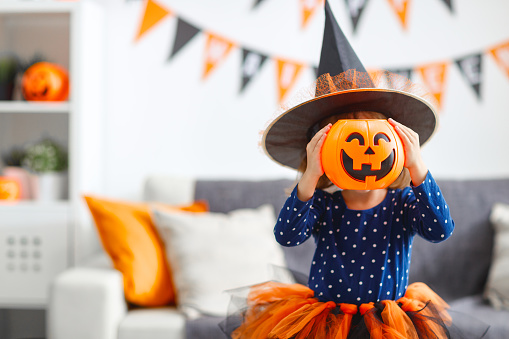Between the spooky haunted houses, the creepy ghost stories and being scared by monsters, Halloween can be a frightening time. But, for children with allergies, Halloween is scarier than being haunted by vampires. Halloween candy and costumes may contain hidden allergens that can cause severe, life-threatening allergic reactions, which is why it is important to be aware of the risks. Use these tips to enjoy trick-or-treating without being scared by allergies.
Allergens in disguise
Halloween candy can hide all sorts of things, aside from a scary amount of sugar. Parents should be aware that common allergens in candy include peanuts, tree nuts, soy, milk, wheat and eggs. These ingredients may not be immediately obvious, so it’s important to read the full list of ingredients on any candy your child is going to consume. Any candy can contain allergens, but be especially wary of chocolate candies and candy bars, where the fillings are unknown—these are the biggest culprits.
Something truly scary
It’s important for all parents to know the signs of a severe allergic reaction. Trick-or-treating will expose your child to all sorts of new foods, which may reveal a previously unknown allergen. Or, your keen eye may save the life of a little peanut with a peanut allergy. Here are a few of the most common signs:
- Hives
- Itchy skin
- Trouble breathing
- Nausea
- Vomiting
- Diarrhea
- Dizziness
Be a secret superhero
In the event of a severe allergic reaction, use an epinephrine auto-injector immediately, following these steps.
- Take the epinephrine auto–injector out of its package.
- Remove the safety cap.
- Hold the auto–injector in your fist.
- Push the end with the needle firmly against the side of the child’s thigh, about halfway between the hip and knee.
- You can give the injection through clothes or on bare skin.
Then seek medical attention to be sure the reaction is not progressing.
Prevention is the best medicine
The best way to keep hidden allergies from ruining your family fun is to avoid them altogether. Encourage non-candy or food items at school and with your neighbors, such as toys and games. Look for homes that are participating in the “teal pumpkin” project. The “teal pumpkin” indicates that these homes are designated safe for food allergy sufferers and will have non-food treat options.
Educate your children, their friends, schools, teachers and caretakers about your child’s allergies and the dangers of accidental consumption to avoid mistakes. Stick to candies that are known to be safe, and do not let your child eat or accept any unknown candies without you checking the ingredients first. If all of this is too spooky, you can always provide the treats or snacks for your child (as you have the most control over those items) and still allow your child to participate in the social aspect of Halloween. Again, prevention, preparedness and being proactive can save lives.
Dr. Purvi Parikh is an adult and pediatric allergist and immunologist with The Allergy & Asthma Network. She completed her fellowship training in allergy and immunology at Albert Einstein College of Medicine’s Montefiore medical center and earned her M.D. from St. George’s University. She is board certified by the American Board of Internal Medicine as well as the American Board of Allergy and Immunology.





